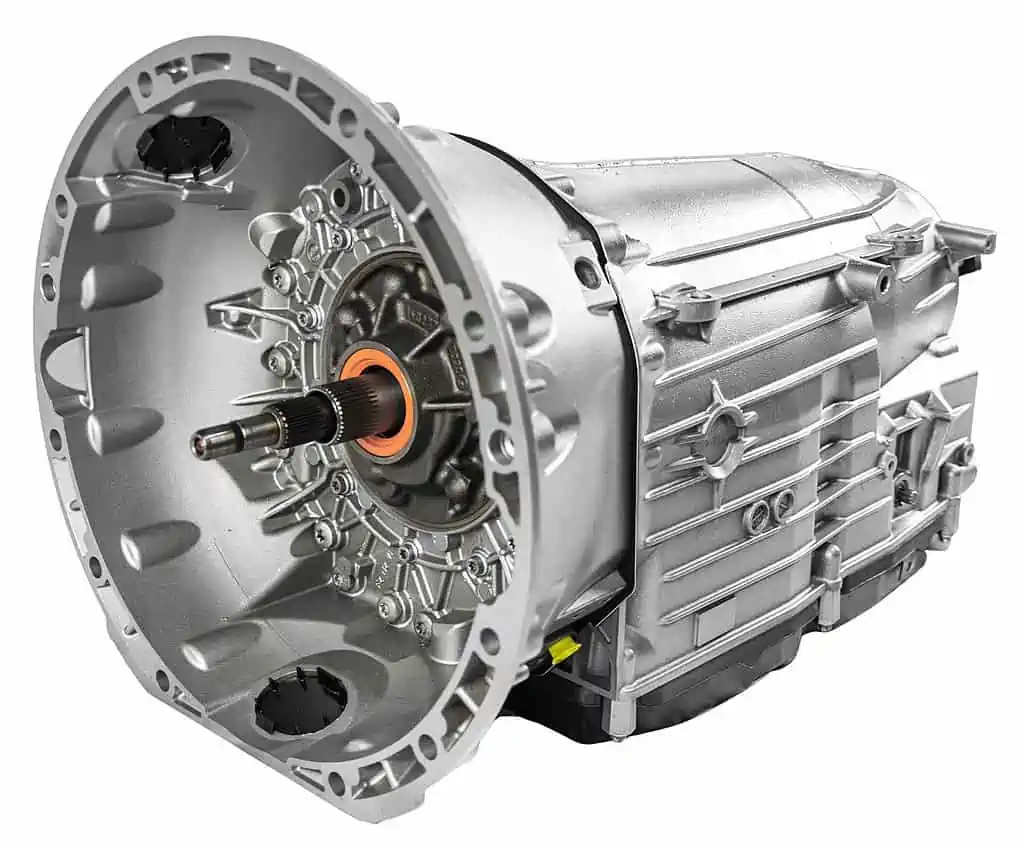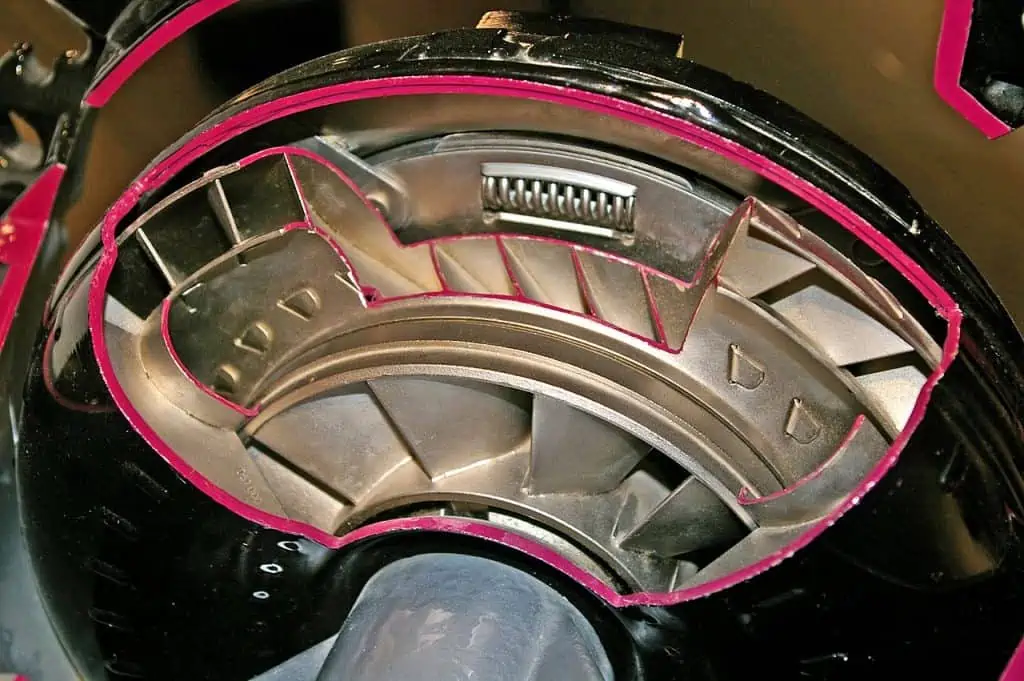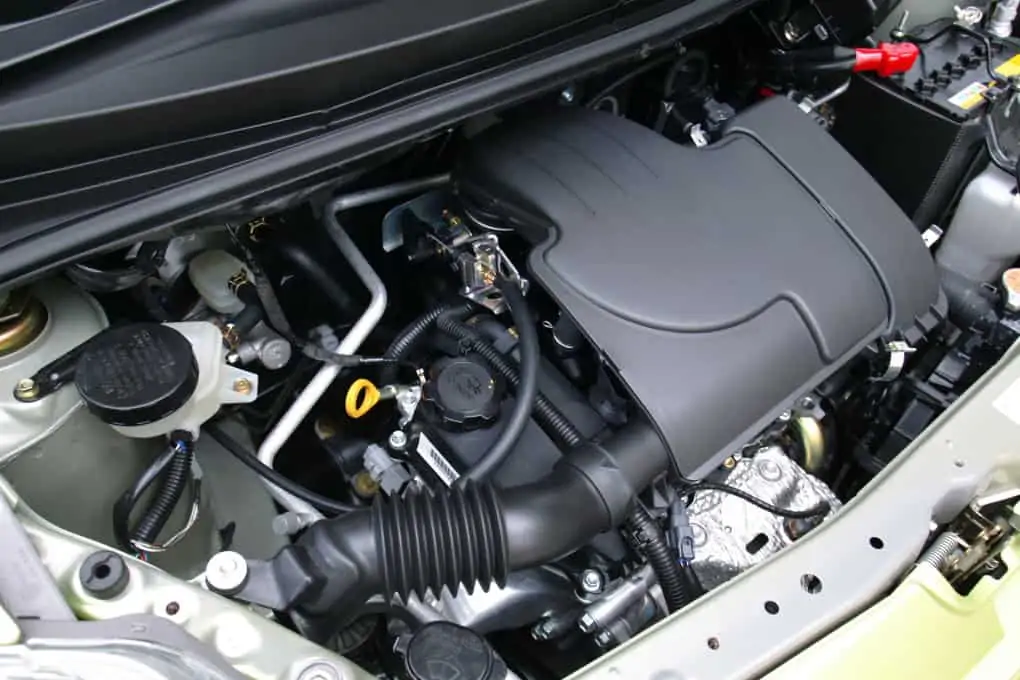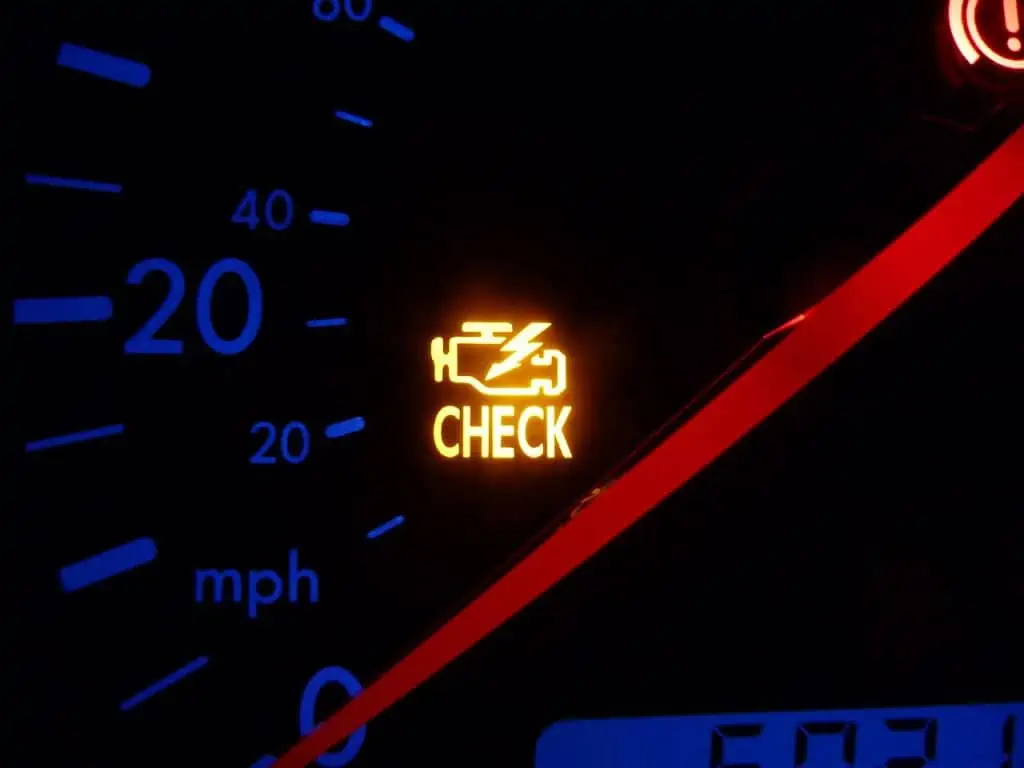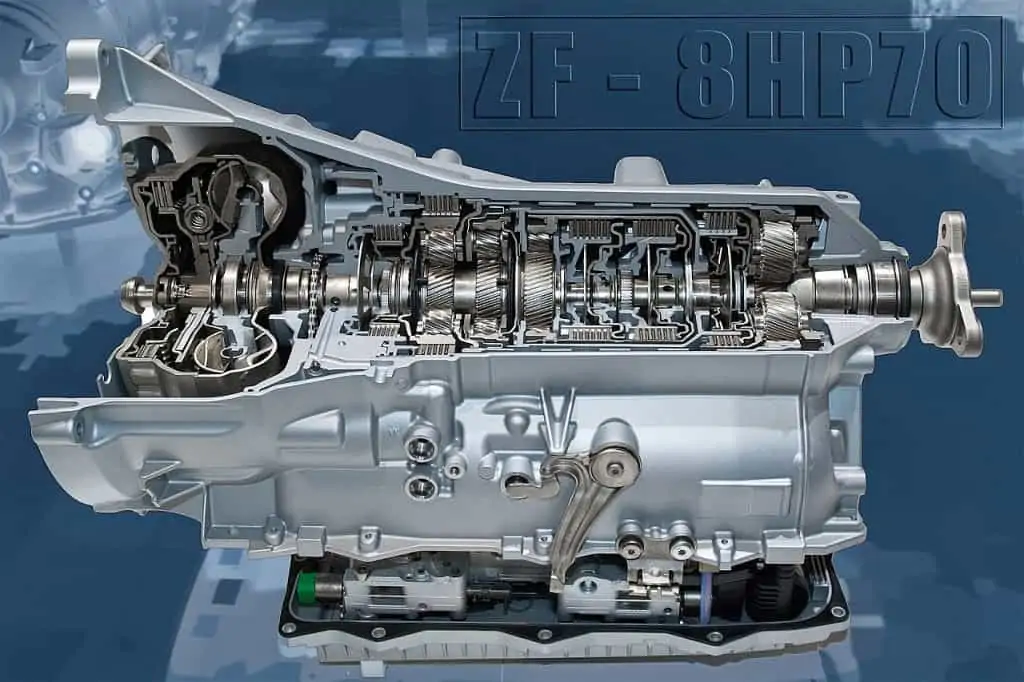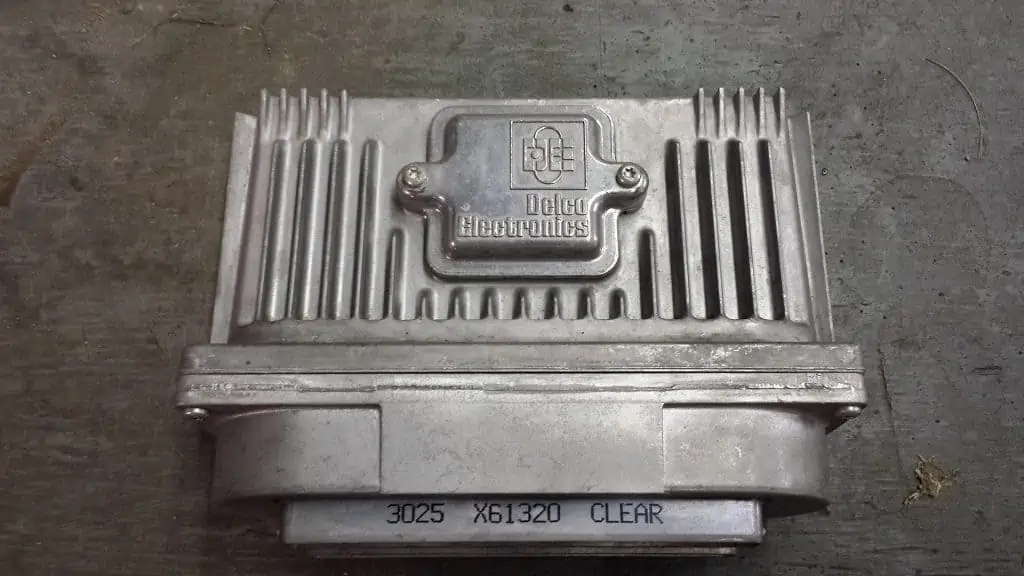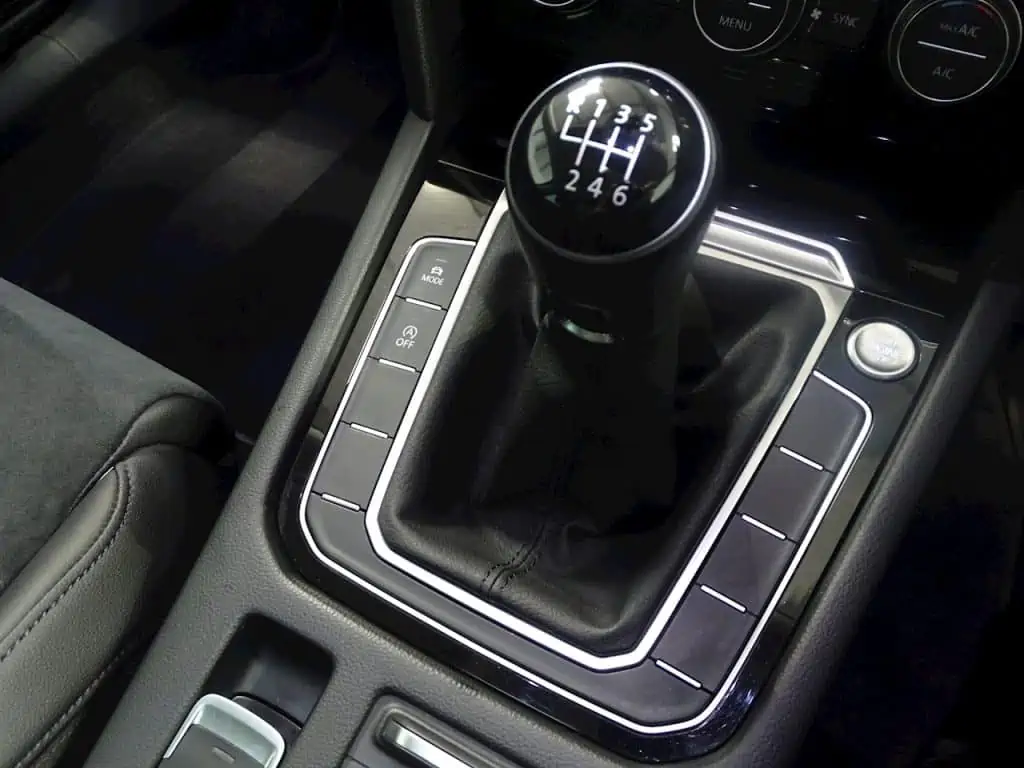Transmission fluid leaks when a car is parked are a frequent problem. That little puddle of brown, red, and green fluid beneath the vehicles must have caught your eye. The transmission fluid leak is to blame for these stains.
Such stains might cost you money since they stain your roads and garage floor. Whether you discovered the leak while the vehicle was in motion or just while it was parked, this problem requires a prompt resolution.
Your vehicle would operate more smoothly if you took such measures. Please be aware that while replacing the fluid and correcting the leaks may cost you money, it is the recommended course of action. Owners of cars should check their transmission fluid levels and top them off as necessary.
A transmission fluid leak may be brought on by a variety of factors. It is crucial to diagnose the problem before you try any fixes.
A crimson pool should have formed underneath your car if transmission fluid had poured onto the ground. It’s bad news and an indication of a transmission fluid leak if you see a little pool of crimson fluid below your car.
In addition to leaving stains on your driveway or garage floor, it may be very expensive to fix the leak and replace the fluid. You should be able to tell what kind of leak it is and how serious it is by the color of the leak.
Many problems, such as damaged seals or gaskets, a poor torque converter seal, or leaking hose clamps, might result in leaks of transmission fluid when parked.
For the vehicle to run, the fluid must remain at a specified level. Do you have any questions about the causes of transmission fluid leaks? The frequent causes, symptoms, and effective remedies for transmission fluid leaks are covered in this article.
What Triggers a Transmission Fluid Leak In a Car?
The most typical reasons for gearbox leaks when your vehicle is parked are described below. A damaged seal or leaking pan gasket is one of the most frequent reasons for a transmission fluid leak when the vehicle is parked.
The car transmission by Leoiii6382 / CC BY 4.0. A transmission fluid leak might be caused by many things. Before attempting any remedies, it is imperative to diagnose the issue.
1. Faulty Seals
Cars frequently experience transmission fluid leaks, which frequently occur when the vehicle is parked. Transmissions have many seals to assist stop these leaks, but as they age, they will deteriorate and become more prone to cracking, which can cause a leak.
Broken seals may result from aging or normal wear and tear on components. As leaking fluids pass through the seal over time, the leak may eventually become visible.
Transmission fluid leaks typically happen when the seals are damaged. Other issues in the vehicle might be the cause of this. Without a comprehensive investigation of the situation, it might be challenging to pinpoint the exact location where the leak will occur.
2. A Faulty Transmission Pan
When you park, your transmission fluid may leak, which might be a sign of a broken transmission pan. The bulk of fluids that leak from a car’s engine is intended to be caught by the transmission pans, which frequently have tiny holes in them for this reason.
Age, normal wear and tear on parts, as well as events when hot transmission fluid pours through the pan and into the ground, can all lead to pan damage.
When the pan has entirely worn away or has holes in it that enable fluid to escape, the gearbox will leak.
3. Faulty Transmission Fluid Lines
When parked, transmission fluid leaks are frequently an indication of overheating. Many of the seals in your gearbox that prevent leaks can break if your vehicle is driven for an extended period at high speeds or with vigorous acceleration, especially in hot weather.
Your transmission fluid may require more care, such as new seals or a transmission fluid cleanse when it begins to overheat. You must constantly check that your transmission has adequate transmission fluid in it to avoid this issue.
4. Faulty Transmission Pan Gasket
A broken transmission pan gasket may be to blame for leaking transmission fluid when the car is stationary. A pan gasket’s purpose is to seal the transmission and keep fluids within, but when they age or are punctured by ground debris, they may start to leak while your car is idling.
The transmission fluid seal, while being a minor component, is crucial to the operation of your car’s gearbox system. You can start using less transmission fluid and encounter leaks if your seal prematurely rips or rots.
5. Slipping Transmission Gears
The transmission fluid serves as a conduit between the car’s engine and the back axle. Normally, transmission fluid is needed to maintain fluid driveline torque, but owners should constantly keep these components in ideal balance by making sure the transmission fluid level doesn’t become too low.
Your vehicle will experience gear slippage if the transmission fluid level drops too low due to a lack of hydraulic pressure. The transmission fluid will also leak from the pan due to this issue.
In some auto gearboxes, hot temperatures can cause the gears to slide. When this occurs, the seal that is situated between two pieces of metal in these regions may fail, allowing the transmission fluid to seep out.
Slippage frequently happens in the front and rear differential gears, as well as in some clutches that might leak after an extended operation.
Torque converter by BerndB~commonswiki / CC BY-SA 3.0. The torque converter and gearbox pan replacements are the most costly tasks. While changing a torque converter may cost up to $2,000, replacing a gearbox pan may cost between $1,500 and $3,500.
6. Improper Fluid Replacement Frequency
The seals in your transmission system may wear out more quickly as a result of the breakdown that occurs over time in transmission fluid. The deteriorating process may cause your fluids to start leaking when parked if you wait too long to change them.
Depending on your driving patterns, the basic best practices for keeping a healthy vehicle include periodic maintenance such as an oil change every three months or so. If you haven’t performed normal maintenance in a while, the transmission fluid leak might be a sign of more serious issues with your vehicle.
7. Sluggish Gear Engagement
Before your vehicle can start moving, the transmission gears need to build up a particular amount of pressure. There will be a lag between gear shifts if the fluid level is too low.
The pan begins to leak transmission fluid as a result of this sluggish action. The amount of transmission fluid that leaks increases as you exert a greater force on the gears.
The braking system on your vehicle may be harmed by this, and part of the costly fluid may also be wasted. Follow the manufacturer’s instructions to change your transmission fluid regularly to extend the life of your car and avoid this issue.
8. The Torque Converter
Before your vehicle can start moving, the transmission gears need to build up a particular amount of pressure. There will be a lag between gear shifts if the fluid level is too low.
The pan begins to leak transmission fluid as a result of this sluggish action. The amount of transmission fluid that leaks increases as you exert a greater force on the gears. The braking system on your vehicle may be harmed by this, and part of the costly fluid may also be wasted.
Follow the manufacturer’s instructions to change your transmission fluid regularly to extend the life of your car and avoid this issue.
9. Gaps In the Transmission
Your transmission system may have cracks that allow transmission fluid to leak. There will often be some form of pressure released from these regions when the engine is not operating or if your car has been sitting still for a while.
If this happens while your transmission fluid level is low, the seal may have failed or been damaged. In either scenario, you must check the transmission fluid level in your vehicle before resuming driving.
10. Car Crashes
There is a chance that your transmission fluid may be leaking if you have recently been in a car accident. The fluid may escape through seals when pushed out under high pressure and speed or from spaces between two metal pieces.
Additionally, leaks might develop where the rubber gaskets are if your car was in an accident.
If so, you must get your vehicle inspected by a mechanic before you start driving once more.
What are the Symptoms of a Transmission Fluid Leak?
Transmission leaks can present in several ways, making it challenging to identify exactly where they are. Any of the following symptoms in your vehicle might indicate a transmission fluid leak:
Car engine by Tennen-Gas / CC BY-SA 3.0. The burnt smell that results from a transmission fluid leak can also be caused by a wiring short within the car or a fire starting in the engine room.
1. Vehicle Accelerates Sluggishly
The gears in your car’s gearbox require lubrication, which is provided by transmission fluid. A leak in the system may be to blame if you find that your vehicle accelerates slowly or if you feel like you’re pushing the pedal to the limit.
2. The Sound of Grinding Gears
There can be an issue with the transmission fluid if the gears are grinding. Leaks here will prevent them from shifting correctly, and if you drive your car with low transmission fluid levels, they can start to grind together.
3. Slipping Gears
If your car’s gears slip while you’re driving, it is another sign that the transmission fluid is leaking. This can be brought on by a leak in the gearbox pan or seal, but if it occurs frequently, it may also indicate that your car’s fluid levels need to be checked.
4. Transmission Generating Too Much Heat
A leak may be indicated by a transmission that is overheated. Your car may have a leaky gearbox if you see that it is creating an excessive amount of heat or if the engine light has turned on.
If there is fluid around and your car’s radiator fan doesn’t shut off when it should, there may be a problem with the fluid level or seal.
Take your transmission to a mechanic as soon as you discover that it is overheating, and have them check the system out before you get back on the road.
5. Puddle Under Your Car
When you park your car and see a puddle there, this is frequently a sign that the transmission fluid is leaking. The type of transmission fluid that is leaking determines the color of the fluid you can see on the ground. Transmission fluid is often crimson. However, you could spot a puddle of a different color, like red, brown, pink, or green.
The steering of the vehicle and other internal car components are frequently lubricated using transmission fluid. So, when the transmission is parked, it could not always originate from the transmission.
If you see a puddle below the vehicle but it is not red, this can be a sign of another internal problem.
6. Vibrations from Transmission and Engine Bay
A transmission fluid leak may be indicated if you notice that your vehicle is shaking more than usual.
This could occur if the rubber gasket has failed or if there is a problem with the seal. This can also happen as a result of leaks in fuel tanks and brake lines, which might generate vibrations or the sense that the car isn’t operating smoothly. It’s typically not a good indication and you should get your vehicle repaired right away if you experience strange sensations while driving.
7. Car Goes Into ”Limp Mode” Or ”Check Engine Light” Illuminates
When the Engine Control Unit (ECU) detects overheating or other major problems, it enters a self-preservation mode called “limp mode,” which lowers performance to protect the transmission. This option will restrict the engine’s output and prevent you from traveling faster than 30 mph in second gear.
To go home or to a repair shop, you may still drive the vehicle extremely slowly. But to fix any possible problems, you’ll need to examine the transmission. On the dashboard of more recent vehicles, there will be a warning light that reads “limp mode,” but in older vehicles, the check engine light will just illuminate.
The Check Engine Light by Wikiuser100000 / CC BY-SA 3.0. Modern cars have a “limp mode” warning light on the dashboard; however, in earlier cars, a gearbox fluid leak will cause the ”check engine light” to come on.
The limp mode should not be ignored since it means that there is probably a serious transmission problem that has to be fixed. Even if it disappears, it will probably come back after you’ve been driving the vehicle for a bit.
Since a check engine light will also come on when the car is in limp mode, you may use an OBD scanner to locate the fault codes and assist with the vehicle’s diagnosis.
8. Burning Smell While Driving
Having low transmission fluid due to a leak might generate a burned smell when driving. especially while traveling at a high speed or when the engine is revved up quite a bit.
This is a result of increased friction between the transmission parts brought on by the low fluid level. As a result, these parts will heat up more than they should, giving off a burned scent while you’re driving.
A wire short within the vehicle or a fire developing in the engine bay is two more causes of the burned smell. This is why having a fire extinguisher in the car is a smart idea so you can put out the fire and lessen the damage.
Keep in mind that fire is unlikely to start from the transmission’s charred scent. However, an overheated transmission can cause significant harm and exhibit several symptoms, including:
How Can You Prevent Transmission Fluid Leaks?
Transmission fluid leak repairs are more pricey the longer you put them off. You may assist guarantee that your transmission doesn’t leak by adopting preventative actions. The following advice can help you avoid transmission fluid leaks:
1. Check the Fluid Levels Often
Making sure that the fluid levels in your vehicle are appropriate is the first step in preventing a transmission fluid leak. Before getting behind the wheel again if anything doesn’t seem quite right, make sure to check for low transmission fluid levels. Leaks and other pricey difficulties with the car will be less likely as a result. To check the levels, your car should have a gearbox dipstick.
2. Periodically Replace the Transmission Fluid
Future leaks can be avoided by changing your transmission fluid at the appropriate intervals. This must be done frequently to prevent leaks and keep the vehicle’s other components in good working order. If you’re unsure how frequently you should change the gearbox fluid in your vehicle, consult your owner’s handbook and any warning lights on your dashboard.
3. Drive Safely
Avoid making abrupt starts and pauses when driving. These may increase the pressure on the gearbox of your vehicle, which may cause a leak if the seal or gasket is damaged. Your transmission will last longer if you drive smoothly and change speeds only when you come to a complete stop.
How Can You Troubleshoot a Transmission Fluid Leak?
Make sure the leak is coming from your transmission before moving on. The type of transmission fluid that is leaking determines the color of the fluid you can see on the ground. It is often red and thinner than motor oil, but depending on the make and type of your vehicle, it may also be reddish-brown, pink, or green. Before making any costly modifications or repairs, it’s crucial to take the time to determine if this leak is the result of your transmission.
Transmission and Torque Converter by Ritchyblack. Transmission fluid leaks when parked can be caused by a variety of issues, including faulty torque converter seals, leaking hose clamps, and broken seals or gaskets.
1. Find the Origin of the Leak
Other components of your car, such as the fuel tank or brake lines, may also leak fluid. Therefore, if you see a puddle and it is not red, this can be a sign that there is another internal problem that has to be resolved.
2. Check to See If the Issue Can Be Resolved
Once you’ve identified the problem, you must decide if you can repair it yourself or if a technician is required. A few leaky droplets of liquid can occasionally be viewed as a little annoyance, but a puddle of liquid is a bigger issue that calls for a professional diagnosis and a more challenging fix.
In addition to being costly to fix, its effects might be deadly if left unchecked.
3. Find the Repair Equipment You Require
The equipment and supplies you will want for the repairs depend on what caused the transmission fluid leak. Many of these components are offered online. Here is a list of typical supplies you could require:
- The ramps or jack stands.
- Fluid for transmission.
- A decent funnel.
- A fresh transmission pan.
- New drain plug and bolts for the transmission pan.
- Fresh seals
- Fresh gaskets
- Fresh cooler lines
- Pipes clamps.
- A Catch pan consisting of a drain funnel
- A transmission replacement fix to the old brand
3. Remove the Old Transmission Fluid
Draining the transmission fluid is the subsequent procedure. This may be accomplished by taking off the transmission pan’s drain plug before employing a catch basin. When handling a leaking fluid, make sure you are wearing the proper safety equipment, such as gloves, glasses, protective clothes, or goggles.
How to Fix a Transmission Fluid Leak
Depending on the issue you need to solve, there are many solutions:
1. Change or Tighten the Drain Plugs or Bolts
Tightening a leaky bolt or drain plug can be sufficient to stop the leak. Bolts may be tightened using pliers or an adjustable wrench, and if they are too old, they can be replaced.
2. Change the Fluid Line
To replace the leaky hose, purchase a fresh, sturdy rubber one. The high pressure and temperature generated by the transmission fluid’s circulation should not damage the replacement hose.
3. Replace the Pan
You would require an appropriate replacement if the transmission pan seemed to be damaged. One may be purchased from a variety of car parts retailers, and installation is simple. Please take out the bolts, take out the old one, and put the new one in.
4. Change Gaskets
Replace the gasket if the transmission fluid leak is being caused by it. Before you replace the gaskets on your transmission pan, make sure you get rid of all signs of old sealant or grease. You’ll need to remove the pan’s bolts to drain the fluid. Over the pan, you’ll observe a liner gasket. A fresh gasket should be used, and it should be greased in place with some oil. Tighten the nuts and reinstall the pan.
It is advised that you have your car serviced by a professional if you have any more issues.
A car ECU by User:Mgiardina09 / CC BY-SA 3.0. The Engine Control Unit (ECU) enters “limp mode,” a self-preservation mode that limits performance to safeguard the transmission, when it senses overheating or other serious issues.
Replenishing the Transmission Fluid
It’s time to replace the transmission fluid once you’ve drained it and fixed the issue. Use safety equipment and ensure your car is on a level surface before starting this process.
Place two quarts or so of fresh transmission fluid in the pan, and then install a new drain plug (make sure it is compatible with the make and model of your vehicle).
Ensure that all old gaskets have been taken out of the pan before installing the transmission fluid. Before tightening their bolts, replace them with new ones if required. After a strong tightening, you’re done.
Transmission Fluid Leak: Using Transmission Fluid Leak Sealers As a Cheaper Option
Before opting to sell or trash your vehicle, you’re certainly looking for cheaper alternatives to the current repairs. ‘’Do those sealers for transmission fluid leaks work?’’ This is always a popular query. Yes, but with an asterisk, is the quick response.
First, only gasket leaks are addressed by these leak sealant chemicals. Therefore, this won’t work if your vehicle leaks at the gearbox lines, torque converter, or pan damage.
Second, they probably won’t last for very long. In our experience, these additives last far less time than the 100,000 miles that some say this leak stopper may endure.
There is no way to predict with certainty how long it will persist because the duration relies on several circumstances, including the intensity of the leak. However, they are ultimately not a long-term fix. Use this as long as you can until you have enough cash for a genuine repair.
The effects of the additives typically take time to manifest. Expect to observe the leak even a few days after adding the chemical because it often appears after 200 miles or three days. However, they are often around $20 and quite simple to use if you only need a temporary solution.
How Much Does the Transmission Fluid Leak Repair Cost?
So, how much would fixing a transmission leak cost you? Depending on where the leak is coming from, the price will vary. This is the cheapest drain plug to replace if it is broken because they cost no more than $10 and are simple to install.
Rear seals and the gearbox pan gasket still have reasonable prices, ranging from $300 to $450, labor included. Typically, parts cost no more than $100 and sometimes much less. However, the labor-intensive nature of the procedure still makes it expensive.
The front transmission seal has to be replaced, which can run up to $600 or more. This is because to replace the seals, your mechanic will need to detach the transmission from the engine. This is a time-consuming and laborious operation.
The most expensive jobs are, finally, changing the gearbox pan and torque converter. According to the make and model of your vehicle, replacing a gearbox pan can cost between $1,500 and $3,500 while replacing a torque converter can cost up to $2,000.
Even so, this is still a little less expensive than changing or rebuilding a gearbox, which may run up to $4,500 for the majority of autos. We won’t hold it against you if you want to forego repairs and simply sell the vehicle as-is or scrap it because it’s still a considerable sum of money.
Car gear shifter by 21C117 / CC BY-SA 4.0. The transmission gears need to build up a certain amount of pressure before your car can move. If the fluid level is too low, gear changes will be delayed.
Is It Safe to Drive with a Transmission Fluid Leak In Your Car?
Driving when the transmission fluid is leaking is improper since the fluid is very combustible. Additionally, these leaks may reduce the car’s acceleration and eventually lead to more significant problems. Therefore, even when a minor leak seems to be okay, you should take your vehicle to repair it right away.
After a flush, if you discover a transmission fluid leak, you should return to the auto mechanic and get it rectified. Make sure you don’t let the leak persist for a long time. Your vehicle will benefit more from your quick actions.
The Conclusion
The gearbox of the vehicle plays a key role in ensuring the smooth operation of the engine and wheels. To operate at their best, they require the appropriate volume of transmission fluid. Although there aren’t many instances of transmission fluid leaks, some vehicle owners do notice stains when their vehicles are stored in their garages.
Such leakage might lead to more serious issues if it is ignored for a long time. Hence, an urgent necessity to address the problem and maintain the vehicle in motion. It would be beneficial if you address a transmission fluid leak between the engine and transmission as soon as you find it. You might learn what to do by taking a quick look at this post.


Jim Wicks is the founder of MotorVehicleHQ. With over two decades of experience in the automotive industry and a degree in Automotive Technology, Jim is a certified car expert who has worked in various roles ranging from a mechanic, car dealership manager, to a racing car driver. He has owned more than 20 cars over the past 15 years. Ask him about any vehicle you see on the road and he can tell you the make, model and year. He loves the aesthetics of all things cars, and keeps his vehicles in pristine condition.
In his free time, Jim enjoys getting his hands dirty under the hood of a classic car or taking long drives along the country roads. His favorite car? A 1967 Shelby GT500, a true classic that, according to Jim, “represents the pure essence of American muscle.”
